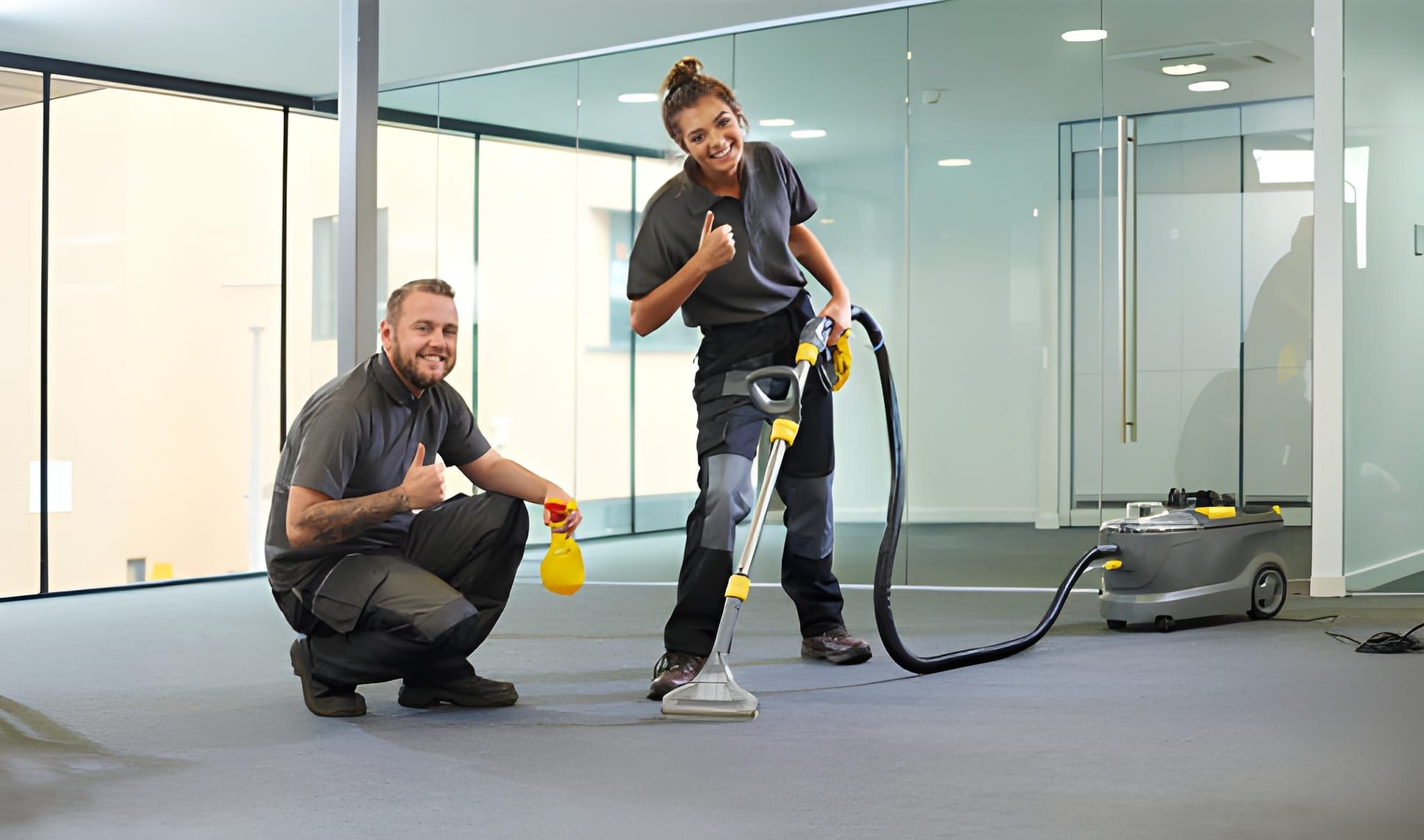
The Ultimate Guide to Professional Carpet Cleaning for Homes and Businesses
Most people don’t schedule a carpet cleaning because they love the idea of moving furniture or waiting for floors to dry. It usually starts with a feeling: the living room smells a little off, the hallway looks dull no matter how often it’s vacuumed, or the baby’s crawling on a rug that hasn’t been deep-cleaned in years. Carpet cleaning isn’t just about appearances; it’s about reclaiming the comfort and cleanliness of your space.
According to the American Lung Association, dirty carpets can contribute to respiratory issues, especially for those with asthma or allergies. That’s why many homeowners now view carpet cleaning as a health essential, not just a cosmetic fix. Carpets are soft underfoot, but they’re also magnets for everything life brings in: dust, pollen, pet dander, food crumbs, bacteria, and moisture.
Over time, even the most beautiful carpet becomes a quiet collector of allergens and odors. And while vacuuming helps, it only reaches the surface. What’s embedded deep in the fibers, that’s where professional cleaning makes all the difference. Across homes and businesses, people are realizing that carpet cleaning is less about luxury and more about health. It’s about breathing easier, living cleaner, and extending the life of something you walk on every single day.
Carpet Cleaning vs. Carpet Replacement
It’s a common question: should I clean it or replace it? The answer depends on a few things: the age of the carpet, the type of damage, and your goals.
Cleaning is ideal when the carpet is structurally sound but looks tired. Maybe it’s stained, flattened, or smells like last year’s holiday party. A deep clean can lift years of buildup, restore texture, and bring back color you forgot was there. Replacement makes sense when the carpet is frayed, moldy, or has padding issues. But many people are surprised by how much a professional cleaning can revive. What looks like a lost cause might just be a layer of grime waiting to be lifted.
If you’re unsure, a technician can help assess if your carpet has more life left in it. In many cases, a good cleaning buys you several more years of use and saves thousands in replacement costs.
Step 1: The First Walkthrough
Every great carpet cleaning starts with a walkthrough, not a machine. A trained technician will begin by inspecting your carpet, not just for stains, but for fiber type, wear patterns, and hidden issues like pet damage or moisture.
They’ll ask questions: Do you have pets? Any allergies in the household? When was the last time the carpet was cleaned? Are there specific spots you’re worried about? This conversation sets the tone for everything that follows. It helps the technician choose the right method, the right solutions, and the right tools. It also gives you a chance to ask questions and understand what to expect, from drying time to stain removal potential.
At this stage, they’ll also check for colorfastness, test cleaning agents on a small area, and identify any areas that need special attention. It’s not just about cleaning, it’s about protecting your carpet and your peace of mind.
Step 2: Setting a Realistic Cleaning Schedule
Carpet cleaning isn’t a one-time fix. Like dental checkups or oil changes, it works best when it’s part of a routine. How often you clean depends on how you live. A single person in a low-traffic apartment might only need a deep clean every 12–18 months. But a family with kids, pets, and a busy household might need service every 3–6 months.
According to Better Homes & Gardens, most carpets should be deep cleaned every 12–18 months, but homes with pets or allergies may need it every 3–6 months. If someone in the home has allergies or asthma, more frequent cleaning can make a big difference. Carpets trap allergens like pollen, dust mites, and pet dander, but when they’re full, they release those particles back into the air.
Commercial spaces are a different story. Offices, retail stores, and public buildings see constant foot traffic. Dirt gets ground in fast, and appearances matter. Most businesses benefit from monthly or quarterly cleanings, especially in high-traffic zones like lobbies and hallways. A good provider will help you build a schedule that fits your needs and budget. Some even offer maintenance plans with reminders, discounts, and priority booking.
Step 3: Choosing the Right Cleaning Method
Not all carpet cleaning is created equal. The method used depends on your carpet’s material, the level of soiling, and how quickly you need it to dry.
Here are the most common approaches:
Hot Water Extraction (Steam Cleaning)
This is the gold standard for deep cleaning. It involves spraying hot water and cleaning solution into the carpet, then extracting it along with dirt and debris. It’s effective for removing allergens, bacteria, and deep-set stains. Drying time is usually 4–6 hours.
Encapsulation Cleaning
This low-moisture method uses a special solution that crystallizes dirt into powder, which is then vacuumed away. It’s fast-drying and great for commercial spaces, but not as deep-cleaning as steam.
Bonnet Cleaning
This surface-level method uses a rotating pad soaked in cleaning solution to absorb dirt from the top layer. It’s quick and inexpensive, but mostly cosmetic, best for interim maintenance.
Dry Compound Cleaning
This method uses absorbent compounds brushed into the carpet and then vacuumed out. It’s safe for delicate fibers and dries almost instantly, but may not remove deep grime.
A professional will recommend the best method based on your carpet’s condition and your goals. The key is matching the method to the material, and knowing when to go deep versus when to maintain.
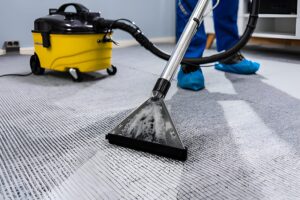
Step 4: Pre-Treatment and Spot Care
Before the main cleaning begins, technicians apply pre-treatment solutions to loosen dirt and target stains. This step is especially important for:
- Pet accidents
- Food and drink spills
- Grease or oil marks
- Ink, paint, or dye stains
- High-traffic lanes that look darker than the rest
Some stains respond to enzyme-based cleaners, others need oxidizers or solvents. A skilled technician knows what to use, and how to avoid damage or discoloration. They’ll also agitate the carpet lightly to help the solution penetrate. This step sets the stage for a more effective clean and a better final result.
Step 5: Deep Cleaning in Action
This is where the transformation happens. The technician works methodically, section by section, using specialized equipment to extract dirt, rinse fibers, and restore texture.
You’ll often hear the hum of the machine, feel the warmth of the steam, and see the difference immediately. What looked dingy and flat starts to lift. Colors return. The air smells cleaner. Professionals follow IICRC standards and use EPA Safer Choice approved solutions that are safe for kids, pets, and sensitive individuals. Behind the scenes, the process includes:
- Applying the chosen cleaning method
- Extracting moisture and debris
- Neutralizing pH to prevent residue
- Grooming the carpet to lift fibers and speed drying
Professionals follow industry standards and use EPA-approved solutions that are safe for kids, pets, and sensitive individuals. The goal is a carpet that’s not just clean, but healthy, soft, and truly refreshed.
Step 6: Drying and Post-Clean Care
Drying is the final, and often overlooked, step. A clean carpet that stays damp too long can develop mold, mildew, or re-soiling. Technicians may use air movers or recommend opening windows and running fans. They’ll also advise you on:
- When it’s safe to walk on the carpet
- How to protect it from furniture legs or shoes
- When to vacuum again
- How to maintain results between cleanings
Most carpets dry within a few hours, but it depends on humidity, airflow, and the method used. The key is ventilation and patience.
The Hidden Benefits of Clean Carpets
People often think of carpet cleaning as a visual upgrade. But the benefits go much deeper.
Improved Air Quality
Carpets trap airborne particles, dust, pollen, pet dander, and more. When full, they release those particles back into the air. Cleaning removes them, making it easier to breathe, especially for allergy sufferers.
Odor Elimination
Over time, carpets absorb smells: cooking, pets, smoke, and moisture. A deep clean neutralizes odors at the source, not just masks them.
Longer Carpet Life
Dirt acts like sandpaper, wearing down fibers with every step. Regular cleaning removes that grit and helps your carpet last years longer.
Healthier Living
Bacteria, mold spores, and dust mites thrive in dirty carpets. Cleaning reduces microbial growth and creates a healthier environment for everyone, especially kids and pets who spend time on the floor.
Better Appearance and Feel
Clean carpets look brighter, feel softer, and make the whole room feel more inviting. It’s like hitting reset on your space.
Responsible Cleaning for a Healthier Planet
Many modern carpet cleaners are moving toward green cleaning methods, using biodegradable, non-toxic products that are safe for kids, pets, and the planet. Techniques like low-moisture encapsulation use 70–80% less water than traditional steam cleaning, helping conserve resources and reduce drying time. Meanwhile, eco-certified detergents leave no chemical residue or fumes.
The Carpet and Rug Institute (CRI) offers a Green Label certification for cleaning systems and products that meet strict environmental standards. When hiring a company, look for this label to ensure your cleaning is both effective and eco-conscious. Eco-conscious carpet cleaning is more than a trend, it’s a responsibility.
Many providers now offer:
- Green-certified solutions that are biodegradable and non-toxic
- Low-water methods that reduce waste and drying time
- HEPA-filtered vacuums that trap fine particles
- Recycling programs for packaging and waste
Choosing a service that values sustainability supports both your health and the environment. It also ensures that your cleaning doesn’t come at the cost of indoor air quality or water pollution.
What Affects the Outcome
Not all carpet cleanings deliver the same results. The outcome depends on a mix of factors, some you can control, and some you can’t.
- Fiber Type Matters
Wool, nylon, polyester, and olefin each fiber reacts differently to moisture, heat, and cleaning agents. A professional knows how to treat each one without causing shrinkage, discoloration, or damage.
- Stain Age and Type
A fresh coffee spill is easier to lift than a year-old ink stain. Organic stains (like food or pet accidents) respond to enzymes, while synthetic ones (like ink or dye) may need solvents. The longer a stain sits, the deeper it sets.
- Traffic Patterns
High-traffic areas, hallways, entryways, and under desks wear down faster and trap more dirt. These zones often need extra attention and more aggressive cleaning.
- Previous Cleanings
If your carpet has been cleaned regularly, it’s easier to maintain. But if it’s been years, expect more time, effort, and possibly multiple passes to get it truly clean.
- Technician Skill
The best equipment in the world won’t help if the person using it doesn’t know what they’re doing. A skilled technician understands chemistry, fiber behavior, and how to adapt on the fly.
Professional Tips for a Cleaner, Longer-Lasting Carpet
After years in the field, seasoned carpet cleaners tend to agree on a few universal truths. Here’s what they wish every homeowner knew:
1. Vacuum Like You Mean It
Vacuuming isn’t just for appearances, it’s your first line of defense. Aim for at least once a week, and more often in high-traffic areas. Use slow, overlapping strokes and empty the canister regularly.
2. Don’t Rub, Blot
When spills happen, resist the urge to scrub. Blot gently with a clean cloth, working from the outside in. Rubbing pushes the stain deeper and can damage the fibers.
3. Rotate Furniture
Heavy furniture compresses carpet fibers. Moving things around occasionally helps prevent permanent indentations and uneven wear.
4. Use Entry Mats
Place mats at every entrance, and clean them often. They catch dirt before it hits your carpet.
5. Ask About Stain Protection
After cleaning, consider applying a fiber protectant. It creates a barrier that repels spills and makes future cleanups easier.
6. Don’t Wait Too Long
The longer you wait between cleanings, the harder it is to restore your carpet. Regular maintenance is cheaper and more effective than emergency rescue.
Avoiding Common Mistakes
Even with the best intentions, some missteps can sabotage your carpet cleaning efforts. Here’s what to avoid:
Over-Wetting
Too much moisture can lead to mold, mildew, and long drying times. Professionals use powerful extraction to remove as much water as possible.
Wrong Products
Using the wrong cleaner, or too much of it, can leave residue that attracts more dirt. Always test in an inconspicuous area and follow label instructions.
Skipping the Pre-Inspection
Without a proper walkthrough, important issues can be missed. Always insist on a pre-cleaning assessment.
DIY Overconfidence
Rental machines can help in a pinch, but they often lack the power and precision of professional equipment. Worse, they can over-wet carpets or leave behind soap.
Ignoring Drying Time
Walking on damp carpet too soon can flatten fibers and reintroduce dirt. Give it time to dry fully before resuming normal use.
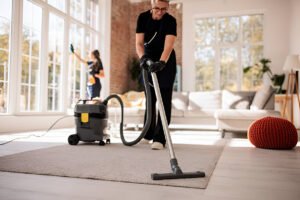
How Long Does Carpet Cleaning Take
Carpet cleaning isn’t a full-day affair, but it’s not a five-minute fix either. The time it takes depends on the size of your space, the type of carpet, the cleaning method used, and how much dirt has settled in over time.
- For most homes, the actual cleaning process, from setup to final pass, takes between one and two hours.
- A one-bedroom apartment might be done in under an hour, while a three-bedroom home could take closer to two and a half.
- Larger homes or commercial spaces often require three hours or more, especially if multiple rooms or high-traffic zones need attention.
- In some cases, commercial jobs are split over multiple visits to avoid disrupting business operations. But cleaning is only half the story. Drying matters just as much.
Steam-cleaned carpets typically take 4 to 6 hours to dry fully, depending on ventilation, humidity, and carpet thickness. Low-moisture methods like encapsulation or dry compound cleaning can cut that time dramatically, often drying within 1 to 2 hours. Technicians may use air movers or recommend opening windows and running fans to speed things up.
If you’re planning around guests, events, or business hours, it’s smart to ask your provider for a realistic timeline. A good team will factor in drying time, furniture movement, and any special treatments you’ve requested.
How Often Should Carpets Be Professionally Cleaned
Carpets are like filters; they trap everything from dust and pollen to pet hair and food particles. But filters need to be cleaned to keep working. That’s why professional carpet cleaning isn’t just about looks, it’s about health, hygiene, and long-term care.
The right frequency depends on how you live:
-
Every 6–12 months
For homes with pets, children, or allergy-sensitive individuals. Pet dander, tracked-in dirt, and spills build up fast, and regular cleaning keeps the air fresh and the carpet safe.
-
Every 12–18 months
For average households with moderate foot traffic. Even if things look clean, deep-set particles and bacteria can linger below the surface.
-
Every 3–6 months
For high-traffic commercial carpet cleaning in spaces like offices, retail stores, or waiting rooms. First impressions matter, and clean carpets signal professionalism and care.
Beyond appearance, regular cleaning helps preserve your carpet’s warranty. Many manufacturers require professional cleaning at least once a year to keep coverage valid. Skipping it could mean losing protection against wear, stains, or defects. If you’re unsure, a technician can help assess your carpet’s condition and recommend a schedule that fits your lifestyle and budget.
What Does Carpet Cleaning Cost
Carpet cleaning isn’t one-size-fits-all, and neither is the pricing. Costs vary based on square footage, cleaning method, stain severity, and whether you’re adding extras like deodorizing or stain protection.
Here’s a general idea of what to expect:
-
Small apartments or single rooms
$75–$150 Ideal for touch-ups, spot treatments, or seasonal refreshes.
-
Mid-sized homes (3–5 rooms)
$200–$400 Covers full-home service with standard steam or encapsulation cleaning.
-
Large homes or multi-level properties
$400–$700+ Includes staircases, hallways, and specialty treatments.
-
Commercial spaces
Typically priced per square foot, ranging from $0.15 to $0.30. Volume discounts may apply for recurring service or large-scale projects.
Add-ons like pet odor removal, anti-allergen treatments, or stain guard protection can cost an additional $25–$75 per service. Some companies offer bundled packages or loyalty discounts for repeat customers. The best providers offer transparent quotes, no hidden fees, no surprise charges. You’ll know exactly what’s included, how long it will take, and what results to expect.
What Affects the Longevity of Carpet
- Vacuuming regularly (2–3 times per week) prevents dirt from grinding into fibers.
- Spot-treating spills immediately reduces permanent staining.
- Using mats at entrances catches debris before it reaches the carpet.
- Rotating furniture prevents uneven wear.
- Scheduling professional cleanings refreshes fibers and restores resilience.
These small steps, combined with periodic deep cleaning, can double the lifespan of your flooring investment.
Cleaning with the Environment in Mind
Today’s carpet cleaning isn’t just about results, it’s about responsibility. More homeowners are asking for eco-friendly options, and the industry is responding.
Green Cleaning Solutions
Many services now use biodegradable, non-toxic products that are safe for kids, pets, and the planet. These solutions clean effectively without harsh chemicals or lingering fumes.
Water Conservation
Low-moisture methods use up to 80% less water than traditional steam cleaning. That’s good for your carpet and for the environment.
Energy-Efficient Equipment
Modern machines are designed to use less electricity while delivering better results. Some even run on battery power or solar-charged systems.
Waste Reduction
From recyclable packaging to reusable pads and filters, responsible companies are finding ways to reduce landfill waste. Choosing a green carpet cleaning service means you’re not just cleaning your home, you’re contributing to a cleaner world.
Choosing the Right Carpet Cleaning Partner
Finding the right provider is about more than price. When you’re inviting someone into your home or business, you want professionalism, transparency, and results.
Here’s what to look for:
Experience and Training
Ask how long they’ve been in business and if their technicians are certified by organizations like the IICRC (Institute of Inspection Cleaning and Restoration Certification).
Clear Communication
A good provider explains their process, answers your questions, and sets realistic expectations. They’ll tell you what’s possible and what’s not.
Transparent Pricing
Avoid vague quotes or bait-and-switch tactics. You should receive a written estimate that includes all services, with no surprise fees.
Customer Reviews
Check independent review sites for consistent feedback. Look for praise around punctuality, professionalism, and results.
Satisfaction Guarantee
Reputable companies stand behind their work. If you’re not happy, they’ll make it right.
Insurance and Licensing
Always confirm that your provider is licensed and insured. This protects you in case of accidents or damage.
Final Thoughts on Carpet Cleaning
Carpet cleaning isn’t just about removing stains; it’s about restoring your space. It’s about walking barefoot without hesitation, letting your kids play on the floor, and breathing easier in your own home.
If you’re preparing for guests, recovering from a spill, or just overdue for a refresh, professional carpet cleaning offers a reset. It lifts more than dirt; it lifts the energy of the room. And when done right, it’s not just a service. It’s a form of care for your home, your health, and your peace of mind.
If your carpets are looking tired, don’t rush to replace them; give them a second chance. A professional deep clean can lift years of wear, restore softness, and refresh your entire space. Ready to breathe new life into your floors? Schedule your carpet cleaning today and rediscover the comfort beneath your feet.
More Blogs
Categories


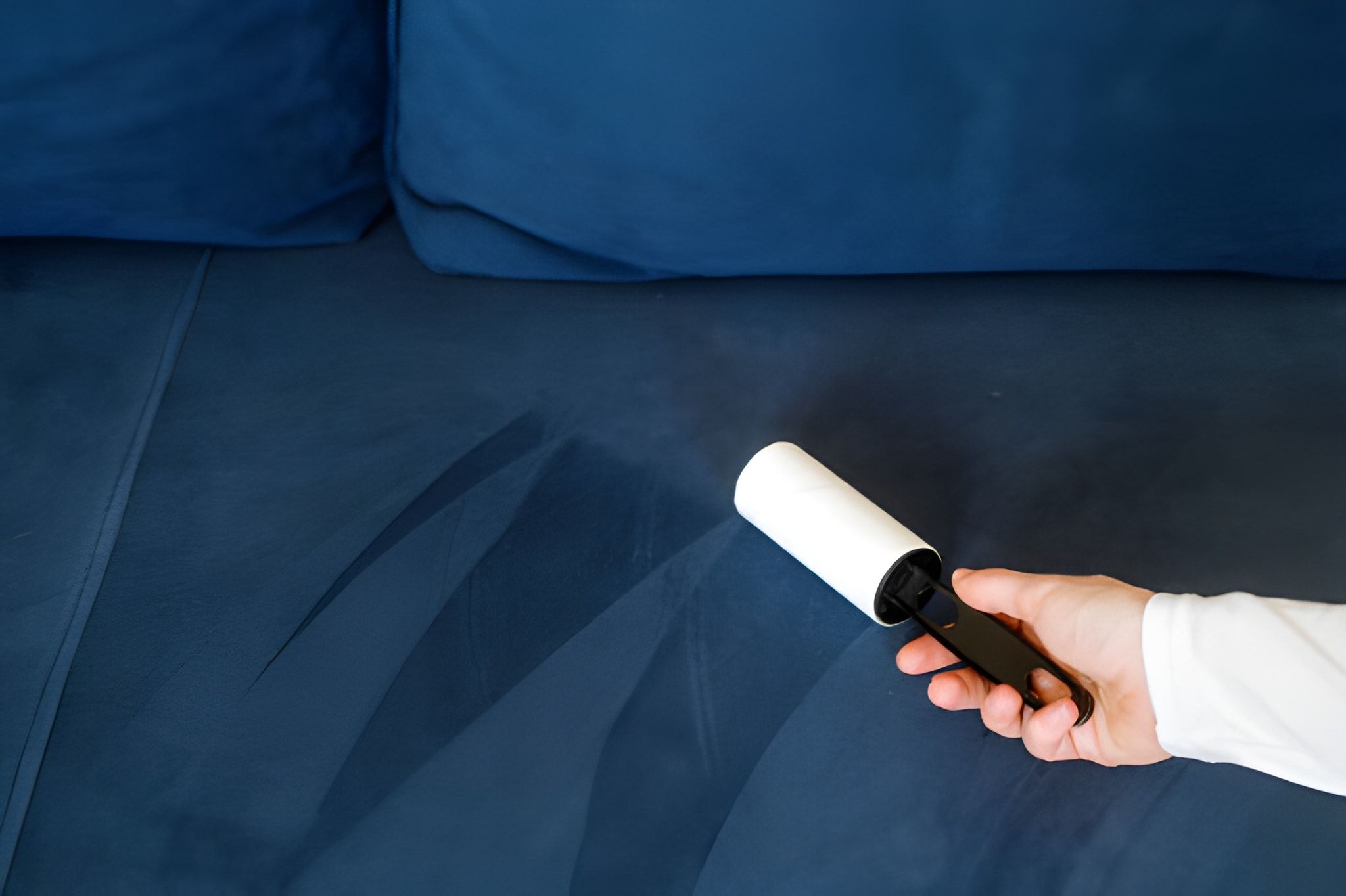
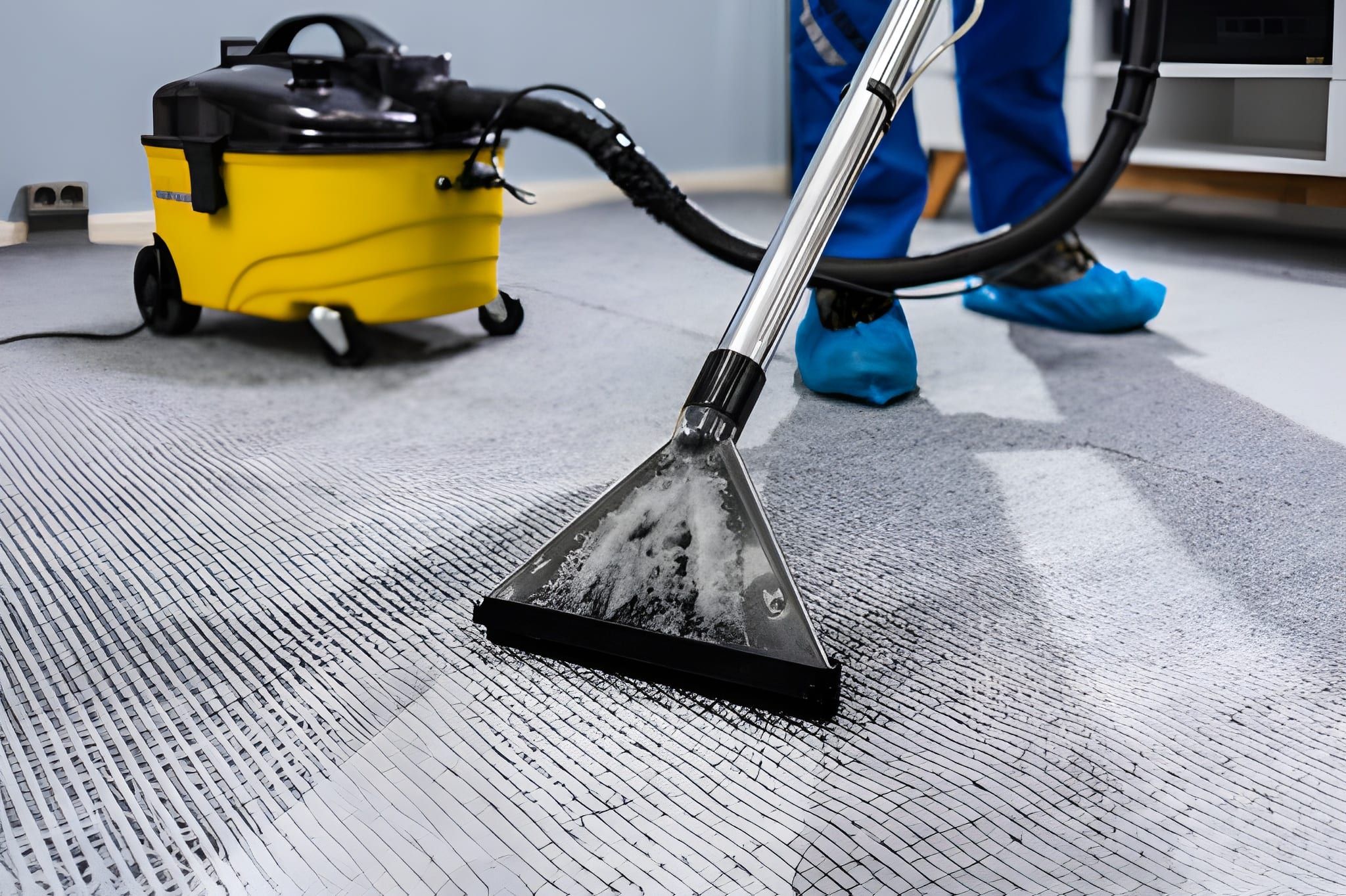



Leave a Reply